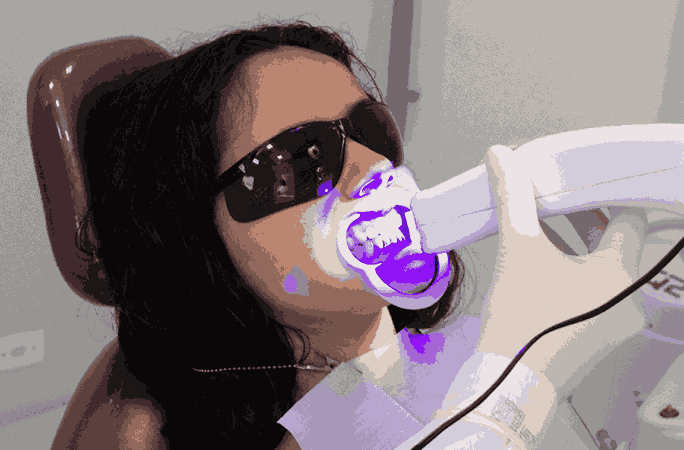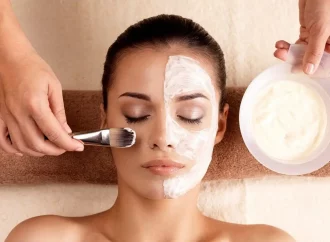In today’s image-conscious society, teeth whitening has become increasingly popular. Whether it’s for a wedding, a job interview, or simply to feel more confident in photos, a bright smile is often associated with beauty and health. Among the many whitening products and methods on the market, two have captured significant attention: charcoal-based whitening products and
In today’s image-conscious society, teeth whitening has become increasingly popular. Whether it’s for a wedding, a job interview, or simply to feel more confident in photos, a bright smile is often associated with beauty and health. Among the many whitening products and methods on the market, two have captured significant attention: charcoal-based whitening products and blue light whitening systems.
Both promise noticeable results, but there is growing concern about their impact on dental health—particularly the safety of tooth enamel. Since enamel plays a critical role in protecting your teeth, it’s essential to understand which whitening method is less harmful and more effective in the long term.
What is Tooth Enamel and Why Does It Matter?
Tooth enamel is the hard, outer layer of your teeth. It serves as a protective barrier against decay and sensitivity. Unlike other tissues in the body, enamel does not regenerate once it’s worn away. This makes it crucial to choose whitening methods that maintain its integrity.
Damage to enamel can lead to:
-
Increased tooth sensitivity
-
Greater risk of cavities
-
Yellowing (as the underlying dentin becomes exposed)
Because of this, the main question isn’t just whether a whitening method works, but whether it is safe for your enamel.
Charcoal Teeth Whitening: Natural but Abrasive
What It Is
Charcoal whitening products, especially activated charcoal toothpaste, have surged in popularity over the last few years. Activated charcoal is made from natural substances like coconut shells or wood, processed at high temperatures to create a highly porous powder. The idea is that these pores “trap” stains and toxins on the teeth, helping to whiten them.
Pros
-
Marketed as a natural, chemical-free option
-
Can help remove surface stains from foods like coffee, tea, and red wine
-
Often available in affordable, over-the-counter products
Cons
-
Charcoal is abrasive and may wear down enamel over time
-
It does not chemically whiten teeth, only removes surface stains
-
Can cause gum irritation or damage to soft tissues
-
Lacks American Dental Association (ADA) approval in most cases
Scientific Findings
Studies have raised concerns about the abrasiveness of charcoal toothpastes. A 2019 review published in the Journal of the American Dental Association found that many charcoal products were highly abrasive and lacked sufficient fluoride. This can lead to enamel erosion and decreased protection against cavities.
Over time, abrasion can actually result in the opposite of what users want—a more yellow appearance due to thinning enamel and exposed dentin.
Blue Light Whitening: Technology Meets Chemistry
What It Is
Blue light whitening is commonly used in combination with peroxide-based gels, such as hydrogen peroxide or carbamide peroxide. The blue LED light is thought to accelerate the chemical reaction, helping break down stains more quickly.
Blue light devices are used both in professional dental settings and in at-home kits. The effectiveness of these systems often depends on the concentration of the peroxide gel and how the light is applied.
Pros
-
Uses proven ingredients that whiten below the enamel surface
-
Non-abrasive, so it doesn’t wear down enamel
-
Can provide noticeable results quickly
-
Some products are ADA-approved and used by dental professionals
Cons
-
Peroxide can cause temporary tooth sensitivity
-
Risk of gum irritation if the gel touches soft tissues
-
Results vary depending on the quality of the product
-
Professional treatments can be costly
Scientific Findings
According to a 2020 study in the Journal of Clinical and Experimental Dentistry, blue light may slightly enhance the effects of peroxide-based gels, but the majority of the whitening comes from the gel itself. The important takeaway is that these methods do not physically damage enamel, making them safer for long-term use when used correctly.
Head-to-Head Comparison
| Aspect | Charcoal Whitening | Blue Light Whitening |
|---|---|---|
| Whitening Method | Physical abrasion | Chemical oxidation |
| Effectiveness | Surface stains only | Surface and deeper stains |
| Enamel Safety | High risk of abrasion | Low risk if used correctly |
| Sensitivity | Low to moderate | Moderate to high (temporary) |
| Gum Safety | May irritate gums | Can burn gums if misused |
| Speed of Results | Gradual improvement | Fast, often after one session |
| Cost | Low | Varies widely |
| ADA Approved Options | Rare | Common among professional kits |
So, Which One is Safer for Your Enamel?
The clear winner in terms of enamel safety is blue light whitening, particularly when used under the guidance of a dental professional or with reputable products. Unlike charcoal, which relies on physical abrasion to scrub away surface stains, blue light systems work chemically, minimizing the risk of damaging enamel.
Charcoal may offer a quick cosmetic improvement, but its long-term use can pose a risk to dental health. The abrasive nature of charcoal powders can slowly wear down enamel, leading to increased sensitivity and discoloration over time.
Blue light whitening, while not without its risks—particularly sensitivity—generally poses less danger to your enamel. With proper application and moderation, it can deliver effective results without compromising dental structure.
Protecting Your Enamel During Whitening
Regardless of which whitening method you choose, following best practices is essential to protect your enamel:
-
Avoid Daily Use of Abrasive Products: Charcoal and baking soda should not be used as daily toothpaste alternatives.
-
Use Fluoride Products: Fluoride helps remineralize enamel and protect against cavities.
-
Limit Acidic Foods After Whitening: Teeth may be more porous after whitening, so avoid citrus fruits, soda, and vinegar for a few hours post-treatment.
-
Consult Your Dentist: Before starting any whitening regimen, a dental professional can advise on the best method for your specific needs.
-
Look for ADA Approval: The ADA Seal of Acceptance ensures the product has been tested for safety and effectiveness.
Conclusion
Teeth whitening is a personal choice, often driven by aesthetic goals. However, long-term oral health should never be compromised for short-term cosmetic gain. Charcoal whitening may appeal to those seeking a “natural” option, but its abrasive nature poses a significant risk to tooth enamel. On the other hand, blue light whitening, when used correctly, offers a safer and more effective approach.
Always choose methods backed by research, consult with your dentist, and remember: once enamel is gone, it doesn’t come back. A bright smile is great—but a healthy one is even better.






















